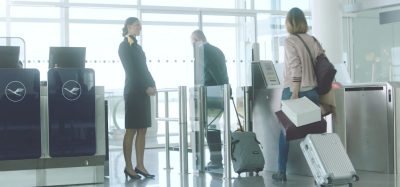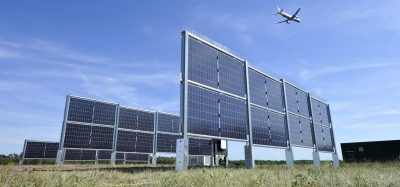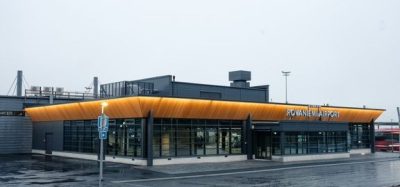Real value for customers: a Q&A about Hungary’s free-route airspace
Posted: 14 June 2018 | Attila Simon | Director of Business Development | HungaroControl | No comments yet
Fresh from scooping up the Sustainability Category Innovation Award at the Airport Show 2018 in Dubai, Attila Simon, Director of Business Development at HungaroControl, speaks about how Hungary’s free-route airspace is a showcase of delivering real customer value.


FREE-ROUTE: HungaroControl's offering enables users to plan and operate along their preferred trajectory
What is unique about Hungary’s free-route airspace as opposed to similar deployments in other European countries?
HungaroControl was the first Air Navigation Service Provider (ANSP) in Europe that introduced unconditional free-route airspace. Free-route airspace deployment in Europe have been gaining traction following a European Commission mandate for European-wide deployment as part of its Single European Sky ambition. However, in many European countries where this operating architecture is being used, it remains conditional on time (e.g. night-only), space (e.g. defined sectors) and or procedural (e.g. direct routing only) restrictions.
The uniqueness of HungaroControl’s free-route airspace is that it is unconditional. Following HungaroControl, only a few other ANSPs globally have succeeded in implementing free-route airspace to a comparable extent. Our environment enables aircraft to fly the shortest possible route and or user-preferred trajectory, yielding real operating cost savings and carbon emission reductions. For us this was a key milestone in the journey towards delivering true trajectory-based operations, and marked the stepping stone from which we can continue to strive for seamless and interoperable service provision for our customers.
What are the benefits of free-route airspace?
Free-route airspace in its various forms drives operating cost savings to airspace users through reduced fuel consumption, likewise delivering reductions in carbon emissions. However the most significant benefit that free-route airspace offers is that it enables users to plan and operate along their preferred trajectory.
Join us live: Shaping the Next Generation of Hold Baggage and Air Cargo Screening
Join us live for an insightful webinar on 11th December at 14:00 GMT, in collaboration with Smiths Detection, as we explore the strategic balance of operational efficiency, regulatory compliance, and sustainability in high-volume security environments.
This session offers a focused look into future-proofing your security strategy.
Key learning points
- Cost Reduction: Strategies to minimize bag travel time while simultaneously reducing operational costs.
- Regulatory Roadmap: Insights into the next wave of regulatory changes and their impact on future investment decisions.
- Sustainable Systems: Practical approaches to building sustainability into security systems and lowering the total cost of ownership (TCO).
- Scalable Solutions: Real-world examples of scalable systems supporting current airport growth and preparing for tomorrow.
Register now for expert insights, case studies, and actionable strategies on operational efficiency!
In our case free-route airspace has been a resounding success for the industry. In Hungarian airspace, the total length of flight paths has reduced by 4.5 million kilometres, resulting in 48 million kilograms of less carbon dioxide being dumped in the atmosphere – one million times the amount of emissions generated by the world’s longest air route (Auckland–Doha). For our customers this equates to an annualised operating cost saving of US$3 million.
Can this operating architecture be extended across flight information region boundaries?
Free-route airspace is not only limited to a single flight information region and can be extended across boundaries to neighbouring countries. In fact, the greatest efficiency benefits are harvested from a free-route airspace architecture that covers a larger geographical area as aircraft operate on optimal trajectories over greater distances and for longer periods.
However realising this aggregate efficiency gain through cross-border airspace interoperability espouses an added layer of complexity to deployment. As flight information regions or airspace volumes are homogenised at an operating level, there are greater dependencies on the critical enablers of cross-border operations including greater system-to-system interoperability and common-use procedures between ANSPs.
There is already marked progress being made in extending state-limited free-route airspace environments across borders, notably in Europe under the Functional Airspace Block model. Following our successful implementation in 2015, HungaroControl has worked closely with neighbouring countries (such as Romania and Bulgaria) to integrate our airspace environments as more and more countries within Europe phase out their fixed-route networks.
What are the challenges with implementing this type operating architecture?
In HungaroControl’s experience, the primary challenges related to managing operational risk and coordination stakeholders during implementation.
First, free-route airspace transforms the operating environment from which controllers have been managing for decades. Thus, it is key to understand the emergent operational risks that may be present. We did this through extensive validation studies, which highlighted to us risk-prone areas. For example, how controllers detect and resolve conflicts within an environment where there are an increased number of conflict-points and where these points are often ‘blind’. Once we understood the impact of change with clarity, we were able to evolve our work practices and put in place technology-enablers to work within this new dynamic environment safely.
Second, as the degree of change is significant with this new operating architecture, the impact extends beyond just air traffic controllers. Therefore, a coordinated approach involving all stakeholders is necessary to ensure successful implementation. During our implementation, we had our regulator and customers on-board from the get-go to ensure that the change could be managed by all involved, from meeting the safety standards of our regulator to ensuring our customers’ flight planning processes were ready for free-route operation. By managing operational risk and effectively coordinating with all stakeholders from design to implementation ensured that benefits were maximised and safety was assured.
Nonetheless as an advanced operating concept, the complexity and associated challenges with introducing free-route airspace depend largely on the maturity of the current-state environment, and the degree of implementation. These challenges, where technological, cultural or complexity-driven, do not preclude the validity of such concepts, but do need to be prudently addressed in a collaborative way with all involved stakeholders.
Can you provide a comment about your win at the Airport Show?
This is not the first accolade that HungaroControl has been awarded. In February 2017, the European Organisation for Quality awarded us the International Quality-Innovation Award for our free-route airspace implementation. Our recent win at the Airport Show 2018 adds further testament to what we have achieved for our customers by working together as an organisation and channelling our broad and deep expertise to drive ground-breaking change. Recognition however is only the veneer to the tangible results that we have delivered to industry, and a case to continue charting new courses. In other words, our Innovation Award win will continue to fuel our unwavering focus on delivering real value to our customers.
The International Airport Summit is open for registration!
Date: 19 – 20 November 2025
Location: JW Marriott Hotel Berlin
At our flagship event of the year, we will dive into the future of airport operations, with expert-led sessions on passenger experience, innovative smart technologies, baggage handling, airside operations, data, security, and sustainability.
This is where global airport leaders come together to share insights, challenges, and real-world solutions.
Limited complimentary passes are available for eligible professionals – first come, first served!


















